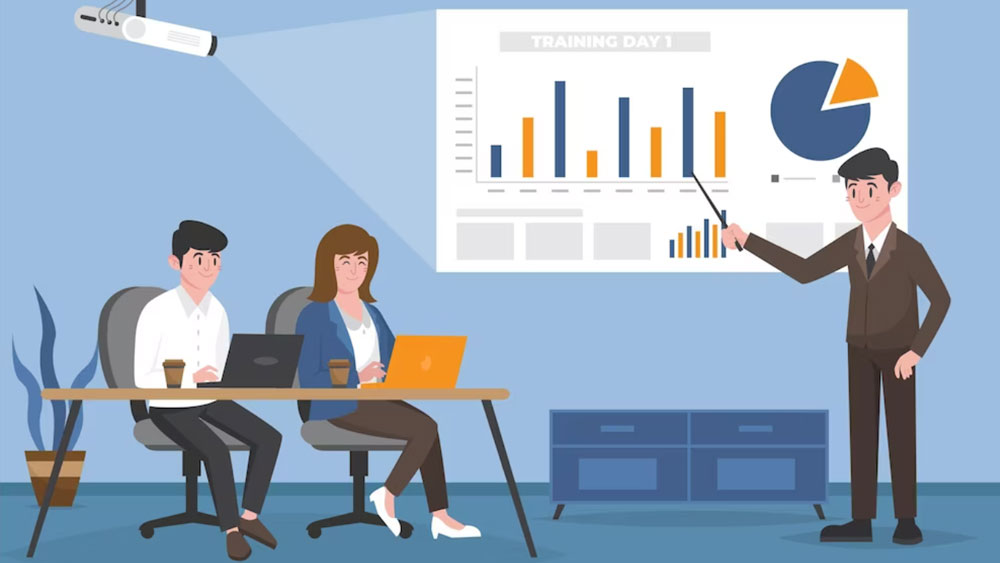




 11/02/2025
11/02/2025
Welcome to the IB Global Academy, your trusted partner in navigating the challenging and rewarding world of International Baccalaureate (IB) education.
For many Indian students and parents, the shift from traditional Indian boards (like CBSE or ICSE) to the IB Middle Years Programme (MYP), spanning Grades 6 to 10, raises critical questions.
How does this framework compare to conventional boards? Is the assessment too challenging? And crucially, how can students secure the specialized support needed to thrive?.
This deep dive is designed to demystify the IB MYP, explaining its unique structure, holistic goals, and innovative assessment methods.
Whether your child is just starting their MYP journey or is preparing for the final e-assessments, understanding this framework is the first step toward maximizing their potential.
The MYP is internationally renowned for providing a comprehensive educational experience, spanning grades 6 to 10, though schools may implement it in abbreviated formats (such as only Grades 9 and 10).
The core goal of the MYP is not merely content delivery but the development of empathetic, creative, and reflective young individuals who possess the necessary skill set to inquire into any issue—be it local, national, or global.
Unlike many Indian boards that provide a fixed curriculum or syllabus, the IB provides an educational framework and guidelines to authorized IB World Schools. This flexibility allows schools to design curricula aligned with the later Diploma Programme (IBDP).
A main feature that sets the MYP apart is its emphasis on interdisciplinary learning alongside subject-specific learning, encouraging students to constantly make connections between their academic studies and the real world.
The MYP mandates learning across eight distinct subject groups, ensuring a broad and balanced education:
The remaining three subject groups are often referred to as the Portfolio Subjects: Arts, Design, and Physical and Health Education (PHD).
For instance, students might identify a problem (e.g., endangered birds due to deforestation) and create a product solution, such as a birdhouse with specific advantages like ventilation or drainage.
Design, Arts, and PHD require a minimum of 50 hours of teaching time each from Grades 6 to 8. In Grades 9 and 10, students can choose to opt for one of these three portfolio subjects.
The MYP is fundamentally inquiry-based learning. This principle is formalized through the Interdisciplinary Unit (IDU), where students are required to bring together concepts, methods, and forms of expression from two or more disciplines to explain a phenomenon, solve a problem, or create a product.
The goal of the IDU is to enable learners to identify an issue and examine it through the lenses of different subjects. This powerful integration ensures that students realize that subjects go hand in hand.
For example, an IDU might combine Math and Science to study electric cars, using the science perspective to learn about batteries and fuel cells, while applying the math perspective to statistical analysis of the rapidly growing electric car market.
Another example involved Biology, Mathematics, and Visual Arts coming together to identify an ecosystem disruption, leading students to build a rainwater harvesting project, utilizing visual art for design solutions and tools.
This emphasis on identifying real-world problems and applying a combination of expertise prepares students for "unknown and unfamiliar situations later in life".
One of the greatest points of divergence between the MYP and traditional Indian boards is assessment. Unlike Indian boards, which heavily focus on exams, rote learning, and memorization of content for high-stakes final exams, the MYP uses a criteria-based assessment system. This approach ensures that a student’s final result is not broken by "one bad day".
In the MYP, assessments are undertaken internally by the school until Grade 9, where tasks are created and marked by teachers based on specific criteria that differ for each subject.
Criteria-Based Assessment
Every MYP subject has four criteria. This system helps a student identify their specific areas of improvement and what steps they need to take to move to the next level. Students are judged based on their learning, knowledge, and overall experience, rather than just compared with their peers.
In Science, for instance, the criteria move far beyond rote memorization:
Similarly, in Mathematics, the assessment includes:
Grade 10 E-Assessments
At the end of MYP Year 5 (Grade 10), the IB offers optional e-assessments that lead to the MYP certificate. These technological assessments replace traditional pen-and-paper examinations.
Students are assessed on six on-screen examinations: Language and Literature, Language Acquisition, Individuals and Societies, Sciences, Mathematics, and Interdisciplinary Learning.
These e-assessments are specifically created to utilize videos and simulations, making them interactive and focusing on the application of real-world knowledge and critical thinking. Assessment often feels less like an exam and more like solving a real-life problem.
To achieve the MYP certificate, students must complete the six e-exams, submit one portfolio (Arts, Design, or PHD), complete school-based expectations for Service Action (community service), and complete a moderated Personal Project. Students need a minimum of 28 points (out of 56 total) and a grade of 3 or higher in each e-assessment component.
The Personal Project (PP) is a non-academic, but crucial, component of the MYP, taking place in the final year (Grade 10) over 7 to 9 months. This independent, long-term project aims to cultivate a student’s own motivation, agency, and capacity for continuous learning.
The topic is entirely student-driven and personally meaningful; it doesn't need to be academic. Examples range from creating a short film about teenage struggles to planning a sports event, exploring finance, or even creating sustainable business ideas like menstrual pads made from banana leaves.
The PP consists of two parts:
Students are assigned a supervisor who guides them, connects them to experts, and assists with documentation. The student must submit a detailed 15-page report documenting the investigation, planning, execution, and evaluation.
Crucially, the Personal Project is not graded by the success of its outcome, but by the whole journey and the student’s reflection upon that journey. If a product fails (such as a vertical planter breaking), the reflection on what was learned from the failure is what the IB expects in the report. This emphasis on skill development—research, communication, critical thinking—is invaluable for Grades 11 and 12, regardless of the board chosen next.
MYP vs. CBSE and ICSE
Indian parents traditionally valued Indian boards (CBSE/ICSE) for their well-defined syllabuses and measurable exam focus. The shift to the MYP requires a new understanding of academic success.
|
Feature |
Indian Boards (CBSE/ICSE) |
IB MYP |
|
Curriculum |
Fixed syllabus, textbooks provided. |
Framework and guidelines; content goes beyond textbooks. |
|
Learning Style |
Rote learning, memorization, content recall. |
Inquiry-based, application, analysis, conceptual understanding. |
|
Focus |
Subject-specific approach, facts, dates. |
Holistic development, interdisciplinary connections. |
|
Assessment |
High-stakes final exams (G10/G12), quantitative marking. |
Criteria-based, skills-focused, one bad day won't ruin results. |
The Transition to CBSE (A Common Question)
Many Indian students still opt for CBSE Grades 11 and 12, especially if they plan to appear for competitive exams within India. Educators and students confirm that the transition from MYP to CBSE Grade 11 is generally smoother and easier than expected.
The skills learned in MYP—such as rigorous critical thinking, research skills, deep analysis, and writing proficiency—give these students an edge. For example, the analytical approach learned in MYP Individuals and Societies (analyzing sources rather than just reciting facts about the French Revolution) transfers directly to higher-level studies.
However, challenges exist: MYP students may need to relearn some specific content covered in the CBSE Grade 9/10 syllabus that wasn't taught in the IB framework. Additionally, transitioning from the digital e-assessments and typing-focused assignments back to the pen-and-paper writing style of CBSE requires practice and adaptation.
Specialized Support: Finding the Right IB Tutor in India
Because the MYP is so distinct from traditional methods, students often face hurdles, particularly in navigating the criteria-based marking and the unique format of the digital e-assessments.
This is where finding a specialized IB tutor in India becomes essential. Generic tutors often struggle to decode the application-based and subjective criteria of the MYP, especially in subjects like Mathematics, where criteria-based marking demands deep justification, or Science, where designing experiments (Criterion B) is mandatory.
A mentoring platform like Sparkle, for example, offers assistance tailored to the IB framework. Their certified tutors offer one-on-one support for subjects like Math, Science, and English, going beyond mere academics to nurture mental well-being.
Crucially, specialized IB tutoring helps students decode the format and build confidence by integrating interactive, IB-style e-assessment questions directly into live classes. Such platforms replicate the look and feel of the real MYP 5 on-screen exam, providing instant feedback and expert guidance to help students prepare for this unique digital challenge.
For an MYP student to truly make the most of the framework—to achieve academic excellence while developing crucial life skills—personalized, expert guidance is necessary to understand the nuances of criteria, inquiry, and reflection.
Embracing Foresight
The IB Middle Years Programme is steadily gaining acceptance in India because it is a program of foresight, encouraging independent thinking and personal development, equipping students for success in the IBDP or the Career-related Programme (CP).
While initial "mental blocks" for Indian parents stem from a lack of awareness about its unique structure, the MYP provides skills—adaptability, critical thinking, communication—that are beneficial in every future field, whether academic or professional.
By understanding the MYP's commitment to interdisciplinary learning, criteria-based assessment, and the reflective power of the Personal Project, families can confidently support their child’s holistic growth.